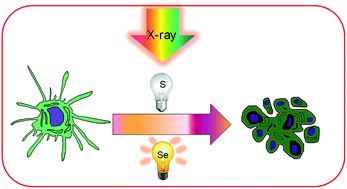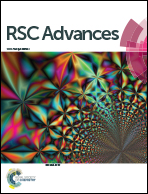Selenium substitution endows cystine with radiosensitization activity against cervical cancer cells†
Abstract
Radiotherapy has been the primary treatment for cancer along with chemotherapy and surgical therapy for decades. However, radiotherapy still fails to efficiently deracinate the hypoxic tumors because of their insensitivity to X-rays. In the present study, we report that selenocysteine (SeC), an analog of cystine (Cys) through selenium substitution of sulfur, could act as an effective radiosensitizer to enhance the anticancer efficacy of radiotherapy through induction of cancer cell apoptosis. By comparing the ROS generation activity of SeC and Cys, we found that selenium substitution significantly enhances the X-ray-induced ROS overproduction in human cervical cancer HeLa cells. Excess ROS could attack various components of DNA and activated downstream signaling pathways in HeLa cells. Specifically, SeC enhanced the radiation-induced phosphorylation of p53 and p38MAPK pathways, and down-regulation of phosphorylated AKT and ERK, and finally resulted in increased radiation sensitivity and inhibited tumor reproduction. Taken together, this study suggests that selenium substitution could be a novel strategy for design of cancer radiosensitizers.


 Please wait while we load your content...
Please wait while we load your content...